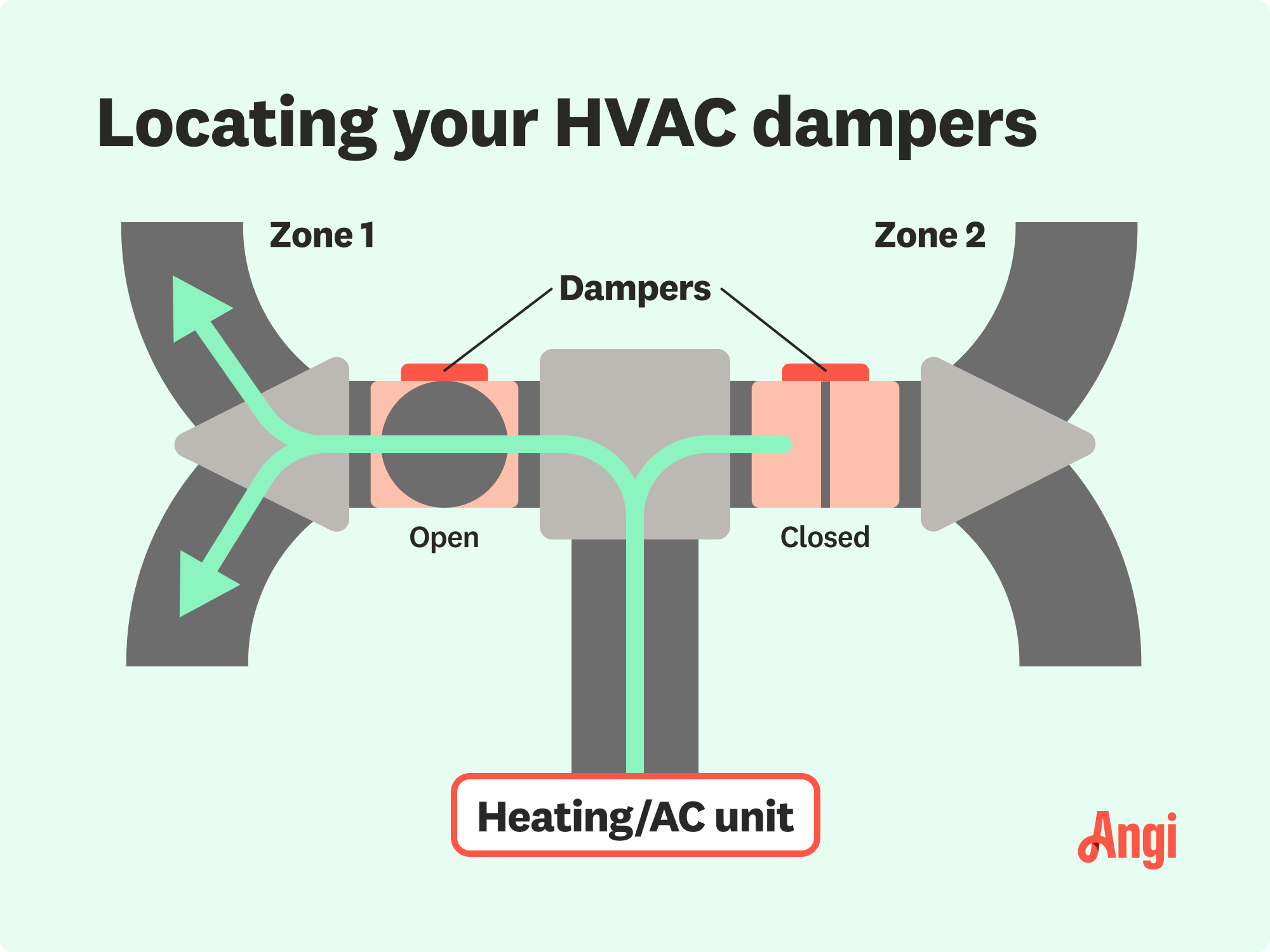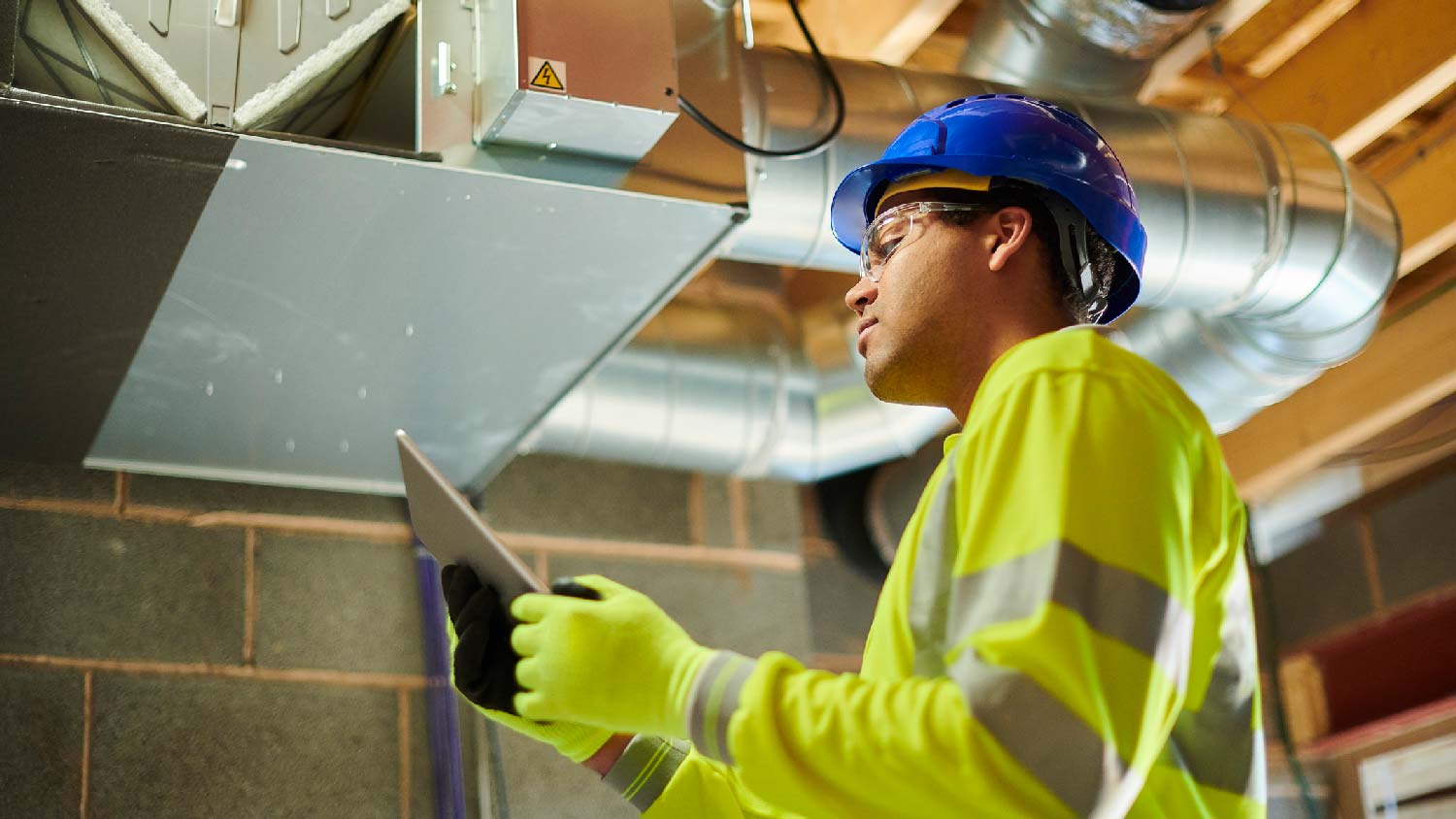
When your heat goes out, it can cause a bit of a panic. But knowledge is power, so let's go over radiator repair costs before that happens.
This simple HVAC part is the key to a more comfortable and well-ventilated home


Dampers are small but mighty components of your HVAC system, helping direct airflow and regulate the temperature inside your house. Depending on the season, you can open and close these valve-like devices to warm or cool your home—but to do that, you have to know where they are. Below, we’ll explain how to find dampers in ductwork so you can adjust them and keep your house comfortable all year.
First things first: What is a damper? HVAC dampers (or duct dampers) are valves inside your ductwork. Like a dam, you can open and close your dampers to control how much air comes through your HVAC system.
You’ll want to open and close your dampers throughout the year to direct airflow to the parts of your home that need heating or cooling. For example, in summer, it’s best to open upstairs dampers and close downstairs ones so cool air flows upwards. In winter, it’s the opposite.
Quality ductwork will increase the efficiency of your HVAC, sometimes by 20% to 30%. This is because there is reduced air leakage due to better insulation and more optimized airflow. This means your HVAC doesn't have to work as hard to keep the desired temperature, so it uses less energy.
There are two categories of dampers: manual and automatic. If you have manual dampers, you’ll need to adjust them by hand whenever you need to control airflow in your home. Automatic dampers have motors to open and close automatically, so you don’t need to do it yourself. Homes with HVAC zoning systems use automatic dampers.
There are multiple types of dampers in these categories:
Butterfly flat dish dampers: These easy-to-install dampers have butterfly-shaped hinges and circular blades that open and close to control airflow. They’re best suited for round ducts.
Louver dampers: Louver dampers have slats that automatically close depending on the pressure levels in your ductwork. They work well with all duct sizes.
Blade dampers: Blade dampers have two blades that move in the same or opposite direction to control airflow.
Inlet vane dampers: Rather than directing or controlling airflow, inlet vane dampers are like small vents and help adjust the air pressure in your ducts.
If you have manual dampers, it’s essential to know where they are since you’ll need to adjust them when the seasons change.
HVAC dampers are most often found in the main trunk line before and after major junctions. You can also find them at various points on multiple system ducts, with two dampers on every main line 90 degrees apart.
Next, find your HVAC system’s main trunk line, the large duct that comes from your furnace and distributes air into your home. Then, trace the main trunk line until you see a lever or handle attached to the duct. This is your damper.
Not every house has dampers, so don’t panic if you can’t find any. However, dampers are great for regulating airflow and temperature, so you might want to hire a pro to install some if you don't have them.


Your dampers play a pivotal role in keeping your house comfortable and well-ventilated, so it’s important to look after them—and the ducts that they’re in. Here are some tips for taking care of your dampers and ductwork.
Take note of any strange sounds in your ductwork. Older dampers often swing open and close, making booming or banging noises. If that’s happening at your house, bring it up with your HVAC specialist.
Stay on top of your HVAC inspections. Ideally, you should have a pro inspect your HVAC system—including your dampers—twice yearly. On average, each visit costs between $150 and $500.
Clean your ducts when necessary. If you notice excessive dirt and debris, mold and mildew, or vermin inside your ducts, it’s time to clean them. Air duct cleaning costs usually range from $270 to $490.
You shouldn’t have much trouble locating and adjusting your dampers, but if you do, don’t hesitate to call a local duct installer. They can show you where to find your dampers, teach you how to open and close them, and ensure they’re in good working condition. If you need to replace a broken damper or install a new one, they can handle that, too.
Adding dampers to existing ductwork costs anywhere from $1,700 to $2,000 for a standard two-zone setup. If you want to add more zones, it’ll cost $350 to $500 per zone, depending on the damper type and installation complexity. The dampers alone cost $70 to $340 per unit, though this depends on the available features and the quality of the materials. Labor is a primary cost factor here, as it takes a while to access the ductwork and install the necessary dampers.
Very professional, polite and helpful. I would recommend him!
Raven and crew does absolutely fantastic job. They are very professional if any concerns were to occur with any of her work she always took responsibility and finished out with a great job. I have worked with her business for a year and have always been satisfied. Very trusted business and...
I had Ace Fireplace Services install custom chimney caps for my home, and the results are stunning. They fit like a glove and have added a touch of sophistication to my chimney. I can't recommend their services enough.
Precision and professionalism define Custom Paint Jobs LLC. We couldnt be happier.
Very professional and efficient with work. Answered each question I had with great knowledge and an informative response. Will be working with them again.
Window Depot did an amazing job on my deck. I wasnt sure what I wanted to do, but their composite decking was affordable and will last a long time. I am excited to have family over, and I am no longer embarrassed by my backyard. Jeff and the ground crew were polite, respectful, and caring for...
Great tree company, very professional and honest. Glad we found them, they had the best pricing
Maple Tree Service should serve as a mentor for other business! Customer service was superior and beyond expectation. Response to request was prompt. The representative was very courteous and proud of the company. Quote was given during initial visit and work date established. A follow up...
Eugene returned my call within minutes and was able to complete the job within a couple of days. Friendly and professional, and I feel his prices are reasonable.
We used Unique Hardwood Floor LLC three years ago to work on the floors of a 70 year old home that needed a great deal of work. Some floors needed repairs, some were replaced and others just needed to be refinished. It was a complicated job as they needed to blend the old and the new to...
From average costs to expert advice, get all the answers you need to get your job done.

When your heat goes out, it can cause a bit of a panic. But knowledge is power, so let's go over radiator repair costs before that happens.

What you’ll pay in Columbus, OH, for furnace repairs depends on many factors. Here’s a breakdown of what can go wrong and the cost to fix those issues.

Switching from oil to gas heating could impact your savings. This guide will help you understand the cost to convert from an oil furnace to a gas furnace.

When you notice hot and cold zones in your home, it pays to learn how to balance airflow in your ducts to even out the temperature.

Ductwork losing energy? Here are six duct sealing methods that will help you get some big savings on your monthly energy bills.

Wondering who to hire for swamp cooler installation? Learn when to call an HVAC contractor, electrician, or handyperson, and what to expect.